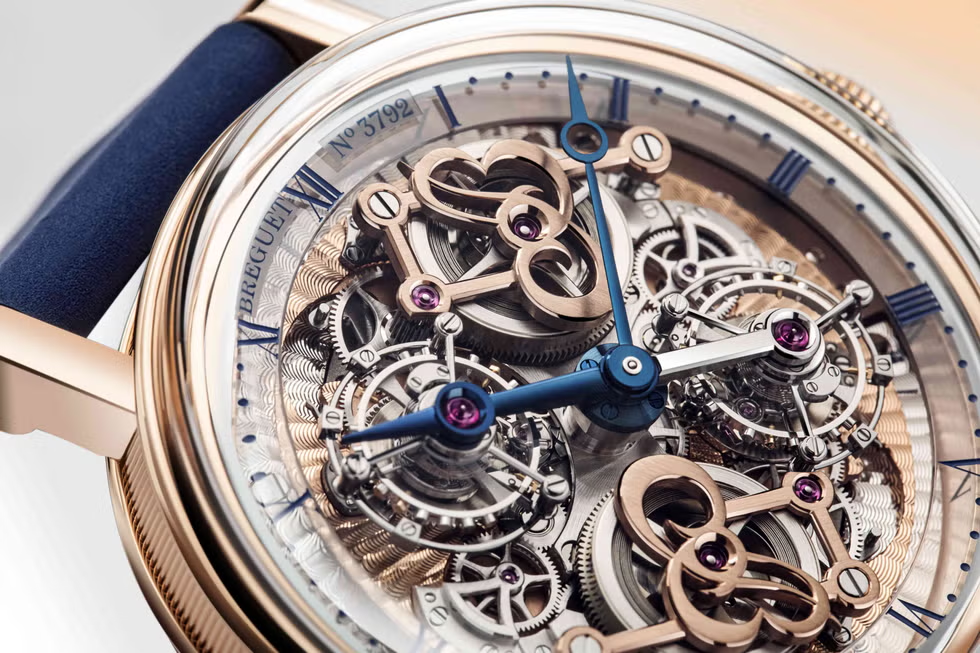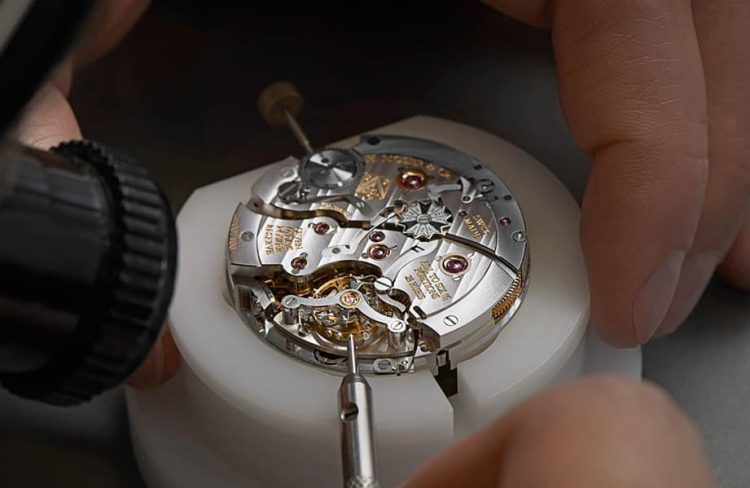Introduction
When it comes to luxury watches, the names International Watch Company (IWC) and Breguet resonate with timepiece enthusiasts, collectors, and professionals worldwide. Each brand is synonymous with precision, craftsmanship, and an illustrious legacy in the horological world. However, owning an IWC or Breguet watch is not simply about enjoying their unparalleled craftsmanship and sophistication—proper maintenance is a crucial aspect of preserving their value, functionality, and aesthetic appeal over the years.
The care and maintenance of luxury watches can vary depending on a multitude of factors including the type of movement, materials used, and the specific model. While IWC and Breguet both have longstanding reputations for producing durable and reliable watches, understanding their unique maintenance requirements and the care needed for their continued optimal performance is essential for any owner.
This article delves into the specifics of IWC and Breguet watch maintenance, comparing how each brand approaches the care of their timepieces, the best practices for ensuring longevity, and the common challenges owners face in keeping their watches in top condition. With the right guidance, watch owners can make informed decisions about proper upkeep to maintain the function, beauty, and investment value of these high-end timepieces.
1. Understanding the Basics of Watch Maintenance
Before diving into the maintenance specifics for IWC and Breguet, it’s important to understand some basic principles of watch care. Luxury watches, especially those crafted by IWC and Breguet, typically contain complex mechanical movements, which require meticulous care.
Why Watch Maintenance is Crucial
Maintaining a luxury watch is about more than just keeping it looking new. Proper care extends the lifespan of the watch, helps it retain its resale value, and ensures its accuracy and functionality. Here are a few key reasons why maintenance is important:
- Preserving the Movement: Both IWC and Breguet use intricate mechanical movements that require regular servicing to function properly over time. Over time, oil lubricants inside the watch can degrade or become thick, causing friction, which may result in a malfunctioning movement. Routine service ensures that the movement operates smoothly.
- Cleaning and Polishing: Regular cleaning and polishing are crucial for maintaining the watch’s aesthetic appeal. Without proper cleaning, dirt and grime can accumulate on the case, dial, or bracelet, which can affect the watch’s overall look.
- Water Resistance: Many watches, particularly those in the IWC Aquatimer series, are built with water resistance in mind. Over time, seals may degrade, compromising the watch’s water-resistant properties. Regular servicing ensures that seals are checked and replaced as necessary.
- Battery and Power Reserve: For automatic or manual watches, maintaining the power reserve and ensuring the mechanism is in top form is essential to avoid inconsistencies in timekeeping.
2. IWC Watch Maintenance and Care
IWC, with its rich history in precision engineering and focus on functional luxury, produces a range of timepieces designed to withstand the rigors of daily use while maintaining their aesthetic integrity. However, like all mechanical watches, IWC timepieces require proper care to continue functioning optimally.
General Maintenance for IWC Watches
IWC watches are known for their robust builds and precision movements. Regular servicing is recommended every 3-5 years to ensure that the watch’s mechanical movement, seals, and overall condition remain intact. The general maintenance tasks for IWC watches include:
- Servicing the Movement: The heart of an IWC watch is its caliber movement, and it should be inspected and serviced periodically. Oil can evaporate or become thick, causing friction and reducing the accuracy of the watch. A professional service will include disassembling the movement, cleaning it, and re-oiling the components where necessary.
- Replacing Gaskets and Seals: For water-resistant models, it is important to check the gaskets and seals regularly. IWC watches, especially those from the Aquatimer and Big Pilot collections, are designed for use in rugged environments. Seals can degrade over time, and a loss of water resistance could occur. Seals should be replaced approximately every 2-3 years depending on the wear and use of the watch.
- Polishing and Cleaning: To maintain the sleek appearance of the watch, regular cleaning is essential. IWC’s stainless steel and titanium models should be cleaned with a soft cloth and gentle soap in warm water. For ceramic models, like the IWC Ceratanium, specialized care is needed to avoid scratching. Regular polishing by a professional can help remove any surface imperfections or scratches.
- Power Reserve Management: IWC’s automatic watches require regular winding to keep the movement running smoothly. If worn regularly, the watch will be kept charged, but if stored for extended periods, it should be wound manually to avoid any power reserve issues.
- Bracelet Care: IWC offers a variety of straps, from steel bracelets to leather and rubber bands. Regular inspection for wear and tear, cleaning, and maintenance of the strap or bracelet is essential. Leather straps should be kept dry and conditioned to avoid cracking.
IWC Watch Servicing Costs
Routine maintenance costs for IWC watches can vary depending on the model and the extent of the service required. An average service can range from $300 to $800 USD, but for complicated models such as the Big Pilot Chronograph or Perpetual Calendar, the cost can be significantly higher, potentially exceeding $1,000 USD.
It is also essential to note that any repairs or replacement of parts (such as dials, hands, or cases) can be much more costly, and these costs will be discussed in detail before any work is done.

3. Breguet Watch Maintenance and Care
Breguet is renowned for its haute horlogerie and complex movements, which often include tourbillons, minute repeaters, perpetual calendars, and other advanced complications. While Breguet watches are crafted to the highest standards, they also require specialized care due to the complexity of their mechanical movements and the luxurious nature of the materials used.
General Maintenance for Breguet Watches
Breguet’s timepieces, being highly intricate, necessitate careful, professional servicing. Owners of Breguet watches should be mindful of the following key aspects of maintaining their timepieces:
- Movement Servicing: Breguet’s movements are among the most complex in the industry. These timepieces typically require a complete overhaul every 3-5 years. This involves dismantling the movement, cleaning the parts, reapplying lubricant, and reassembling it. The highly complex tourbillons and minute repeaters must be handled by skilled professionals who are familiar with Breguet’s unique movements.
- Dial and Case Preservation: Breguet’s use of hand-guilloché dials and enamel requires specialized care. Enamel dials are susceptible to scratches and discoloration. For cleaning, only a soft brush or cloth should be used to avoid damaging the delicate surface. Polishing and refinishing should only be done by an authorized Breguet technician to preserve the integrity of the craftsmanship.
- Water Resistance: Breguet watches, particularly those from the Classique and Marine collections, are typically water-resistant but still require the periodic replacement of gaskets to ensure that water resistance is maintained. Breguet’s marine models feature rubber seals and gaskets, which should be inspected and replaced during regular service intervals.
- Bracelet and Strap Care: Like IWC, Breguet offers a variety of bracelet options, including steel, leather, and rubber straps. Leather straps should be conditioned periodically to maintain their flexibility, while metal bracelets should be carefully cleaned to remove dirt and prevent corrosion. Special care should be taken to ensure that platinum or gold bracelets remain pristine.
- Lubrication and Oil Replacement: The high-end complications in Breguet timepieces often require precise oil replacement during servicing. If not properly maintained, the oils inside the movement can dry out or become too thick, leading to friction that can affect the accuracy and longevity of the timepiece.
Breguet Watch Servicing Costs
Given the complexity and artistry involved in each Breguet timepiece, servicing costs can be significantly higher compared to IWC. A standard service for a Breguet timepiece may range from $500 to $1,500 USD, while servicing a complicated model like a minute repeater or tourbillon could cost upwards of $3,000 to $5,000 USD or more, depending on the scope of the work.
Due to the exclusivity and precision involved in maintaining a Breguet, it is important for owners to only trust Breguet-certified technicians to perform repairs or service work.
4. Common Issues and Preventative Care for IWC and Breguet Watches
Both IWC and Breguet timepieces are engineered to stand the test of time, but there are some common maintenance issues that owners should be aware of.
Common Maintenance Issues for IWC Watches
- Scratched Crystals: IWC’s models, especially those with sapphire crystals, can be prone to scratches if not properly cared for. Using the watch in harsh conditions or with abrasive materials can result in visible damage to the crystal.
- Movement Problems: If the watch has been wound incorrectly or not worn regularly, there can be power reserve issues. Always follow the winding instructions provided by the manufacturer to avoid any damage.
Common Maintenance Issues for Breguet Watches
- Dial and Enamel Damage: Breguet’s enamel dials are delicate and can easily get scratched or stained. It is important to avoid exposing the watch to harsh chemicals, sunlight, or extreme temperatures.
- Tourbillon Issues: The tourbillon complication, while beautiful and highly technical, is sensitive to shock and wear. It should only be handled by experienced watchmakers to prevent any damage to the intricate mechanism.
Conclusion
Both IWC and Breguet are brands that represent the pinnacle of Swiss watchmaking—each with its own rich history, innovative technologies, and distinct design philosophies. When it comes to maintaining these prestigious timepieces, the key to preserving their beauty, accuracy, and longevity lies in regular care and professional servicing. While IWC watches are generally more rugged and require less frequent intervention, Breguet timepieces demand more specialized attention due to their intricate complications and delicate artistry. Regardless of the brand, regular servicing and careful attention to the watch’s components ensure that these extraordinary timepieces continue to perform flawlessly, retaining their value and beauty for generations to come.





































